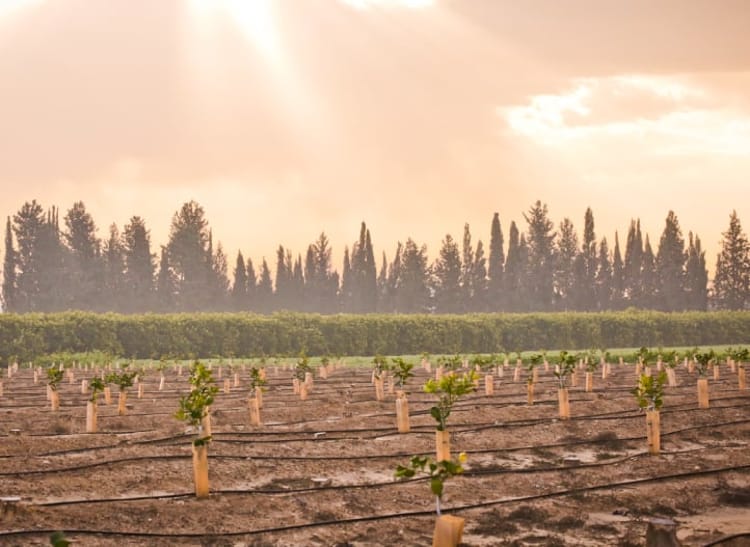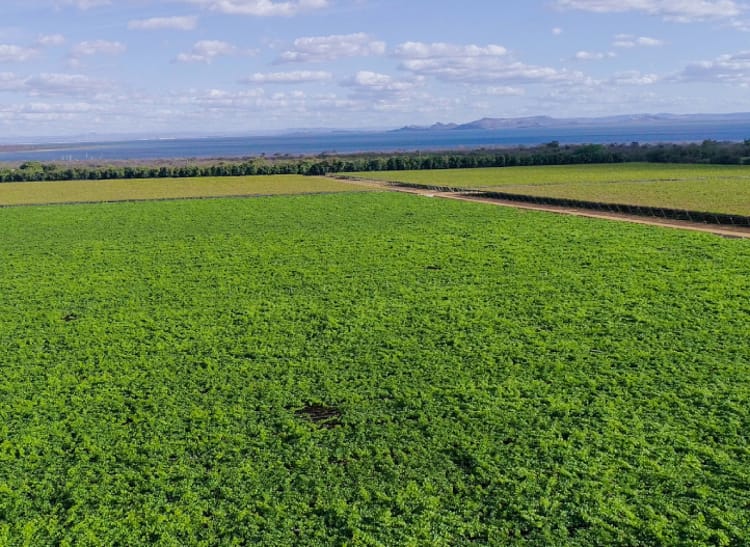Precision agriculture for a sustainable regional future
I just returned from Dubai, where I had the honor of speaking at the AgrIsrael conference, at the invitation of Israel’s Minister of Agriculture and Rural Development.
Like most of us in Netafim, I’m very familiar with deserts. I’ve visited numerous Netafim projects in the deserts of the Middle East, and I’ve been to our projects in Abu Dhabi, Al Ain, Siwa and elsewhere.
But this time was different.
This time, I was the emissary not just of Netafim and Israel (which are themselves honors), but also of sustainability and good neighborliness. In the shadow of the Abraham Accords, at a time when our region is changing rapidly for the better, I had the privilege of sharing the vision of sustainable agriculture with some of the leading minds among our neighbors in the Middle East.
Here's what I told them:
We’re Facing Unprecedented Regional Challenges
There are more than 450 million people living in the Middle East and North Africa today, and our rate of population growth is nearly twice that of East Asia and four times that of Western nations.
A large and rapidly growing population in an arid climate is a recipe for agricultural – not to mention societal - challenges. And anyone who lives here knows that this is truly the case.
Our regional shortfall of freshwater is already driving migration and fueling poverty and hunger. And it will cost us up to 14% of our collective GDPs by 2050 – the highest estimated loss to GDP due to water scarcity in the world. Climate change is hitting us hard, too – the Middle East is warming at twice the global average.
All this of course deeply affects agriculture. And the simple fact is that the Middle East doesn’t currently produce enough food. More than 35% of the region’s population is employed in agriculture, and agriculture contributes 13% to our collective GDP. Yet Middle Eastern countries still need to collectively import about 50% of their food – in some places, more than 90%.

Today’s Mainstream Agriculture is Part of the Problem
How did we get here, and (more crucially) how can we change course?
The single biggest problem facing mainstream agricultural practices in the Middle East is that they are simply unsustainable.
For example, the usage of water and land are not efficient. Globally, 70% of water goes to agriculture, yet only 24% of arable land is irrigated. And of the land that is irrigated, 75% is irrigated wastefully using traditional flooding methods. This translates into less water for domestic and industrial usage, while the water used for agriculture is partially wasted.
Of course, there are numerous other contributing factors to the unsustainability of agriculture in the Middle East. Yet there’s no question that currently accepted industrial-agricultural practices need to shift towards sustainability.
Yet There’s Hope in Precision Agriculture
Despite the massive challenges the Middle East has, there are many positive trends pushing agriculture towards sustainability. One of the most prominent of these is precision agriculture.
Precision agriculture has one overriding goal: to grow more with less. This means not only less resources, but also less environmental impact.
It’s a very broad term that means a lot of things to a lot of people:
- For farming equipment companies, it means GPS-guided machinery that leverages GIS data to more efficiently plant and harvest.
- For data-driven farming providers, it means the fusion of mobile technology, remote-sensing data, distributed computing and even AI to optimize returns on inputs while preserving resources.
- For greenhouse providers, it’s about leveraging automation and other technology to create a controlled environment that protects plants, increases yields and reduces labor costs.
- And for irrigation innovators like Netafim, it means using data-driven, AI-powered precision irrigation systems that give each plant the exact amount of water and fertilizer it needs, at scale.
Just as renewable energy technology is slowly turning the ship of fossil-based energy towards more sustainable alternatives, precision agriculture is changing the way we grow and harvest.
For example, in our project in Siwa in Western Egypt, we applied the principles of precision agriculture to create an olive plantation spanning 100 hectares in an extremely arid and harsh desert environment. Despite the fact that the soil was almost all sand with no structure, and low water holding capacity of the field, we managed to achieve impressive tree development with an impressive yield potential.

The Bottom Line
Overall, my message to the conference attendees was that the Middle East stands at a unique geopolitical and scientific crossroads. It’s a perfect storm of need and ability – and it’s time to apply our collective wills and technology to transitioning agriculture in the region towards sustainability and self-sufficiency.
The Abraham Accords have provided the Middle East with a unique opportunity at this crucial time in our region’s history. Just as we at Netafim have played a crucial role in making Israel’s deserts green, we can play a major role in realizing the vision of sustainable agriculture across the Middle East.
Together with private and public sector leadership, the countries in the Middle East are coming together to address pressing agricultural challenges with budget, science and entrepreneurship to forge a community of sustainability.
The powerful combination of human-will, technology and knowledge have the potential to solve our world’s most daunting challenges. What remains is for all of us – in the public and private sectors – to work-together and ensure that theory and promise become reality to deliver higher yields with fewer resources, optimizing food growth, and reducing the environmental impact of agriculture.
In order to ensure demand for food can be met as the climate warms, this has to be the way forward for the rest of the world too. Never before has the global focus been on looking after our environment, as it is now, and it presents an opportunity to solve these agricultural issues.
Together, we can not only solve today’s agricultural and ecological challenges, but we should drive society towards a more sustainable, food-secure future.


Comments
We'd love to hear your thoughts! To enter a comment, type your name and email address.